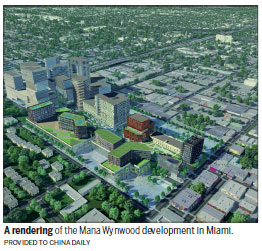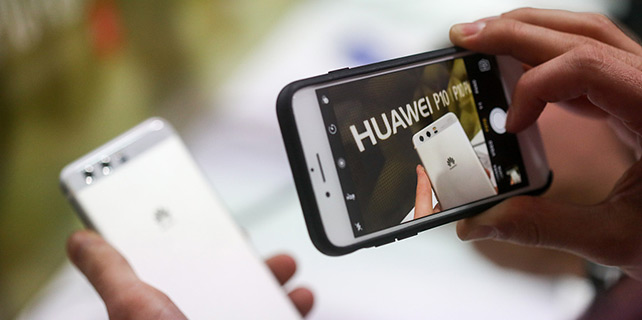Miami key to China business with LatAm

A Miami company plans to build a trade center that connects China and Latin America.
Mana Group, the largest developer in Miami's Wynwood art district, is proposing a 10 million-square-foot facility called MANA Wynwood Americas-Asia Trade Center & International Financial Center (TCIFC).
Phase 1 of the center will consist of 4.68 million square feet of office space, showrooms, retail stores, hotels and public spaces, where Chinese companies and other companies from 32 countries in Latin America will meet.
The facility has been designed, and Mana group said it is talking to investors and strategic partners. Those from China are their main focus.
"Despite the efficiencies that e-commerce and online trade platforms provide, people still trust in their ability to touch merchandise and do business face to face. We are going to provide that comfort that they want," said Moishe Mana, chairman of Mana Group.
Bilateral trade between China and Latin America grew from $12 billion in 2000 to $300 billion in 2015, and by 2020 it's expected to reach $750 billion, according to Theodore Ward, a partner at Novam Portam, a consulting group working with Mana Group on the project.
China is a large importer of iron, soybeans, copper and oil from Latin American countries. At the same time, China is inserting itself into key infrastructure.
In Ecuador, Chinese money, technology and expertise have built a massive hydroelectric plant that provides 35 percent of the country's energy. Two nuclear power plants in Argentina, a 152-mile-long motorway in Colombia, and a container port in northern Brazil are examples of some other Chinese investments.
"There is still room for further collaboration, consolidation of relationships and follow-through," Ward said.
For example, two-thirds of all Peruvian agriculture companies that exported to China stopped over the past five years.
"This isn't because there's a lack of demand in China for those exports, such as fruits, berries and other high-quality agriculture goods. It's because there needs to be more coordination between exporters and Chinese consumer platforms and regulators," he said.
"Until recently, Latin Americans saw China as important, but not as much as they do now," Mana told China Daily.
"Today they see that China is a vital partner for them. They're much more eager to do business with China. They see opportunity in China, they see the future," he said.
The developer believes that with its geological advantage and cultural background, Miami would make an ideal magnet for Asia and Latin America.
Florida International University (FIU) sees the same kind of opportunity. The university started a Spanish program at Qingdao University in December 2014 to train students who in the future could facilitate trade between China and Latin America.
"Trade between Asia and Latin America remains fragmented, and is being held back by a lack of a platform," says Dr Peng Lu, associate provost for international programs at FIU.
"The world's best location for such a platform is Miami. Miami is Latin America's economic center, like Singapore or Hong Kong in Asia. The TCIFC can establish a partnership with trade and logistic hubs in the Far East," he said.
Miami is expecting a direct flight from China, and a Miami Chinatown is in discussion.
People are confident that Miami will one day become a focal point between China and Latin America, and the city itself will benefit from the job creation and economic impact.
"It's not a matter of if, it's a matter of when," said Mark Rosenberg, president of FIU, who's heading to China soon to recruit more Chinese students to Miami.
hezijiang@chinadailyusa.com








